The employee growth rate measures how much a company's workforce has grown or receded over a specific period of time. This article shows you why it's important and how you can calculate it.
More than at any other time in recent history, the labor market is struggling – and it’s not for lack of jobs. Over 47 million Americans voluntarily quit their jobs in 2021.
That’s not it. According to a recent survey by the World Economic Forum, two-fifths of people globally are considering quitting their jobs.
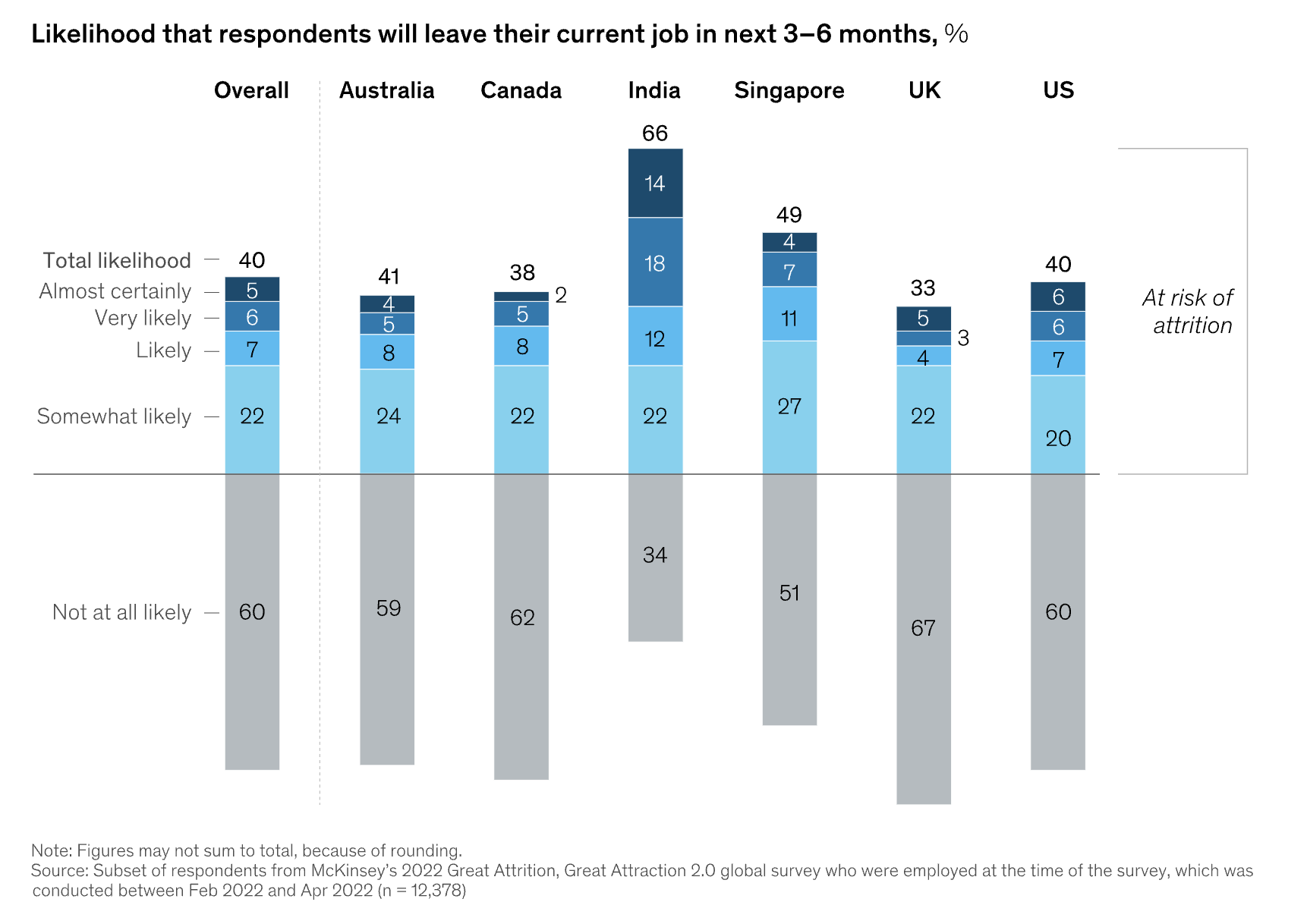
Source: WeForum
What does this all mean to your organization? Amidst the increasing talent risks and in the wake of a global financial crisis, maintaining company growth is the key to long-term success.
The best way to stem the tsunami of turnovers and grow your company is to recruit top talent as well as maintain an active focus on employee retention. While most businesses put a lot of emphasis on recruitment, many don’t have a concrete employee retention strategy.
Essentially, retention starts with a positive employee experience (EX). Organizations must offer a top-notch EX to retain and foster high-potential talent.
Let’s understand how a key HR metric - employee growth rate, helps you keep your heads above the water and plan for the future.
What is an employee growth calculator?
Imagine a scenario. Sales are booming, web traffic is increasing, and demands are at an all-time high. But you don’t have a sufficient workforce to handle this growth. You’ll have to figure out a way to solve this problem.
Ask yourself this question:
-
Are your retention and recruitment strategy in place?
-
Are more people joining your organization or more people quitting than joining?
This is where the role of an employee growth calculator comes into play.
An employee growth calculator helps you track your business growth rate and plan the rest of your goals, KPIs, and projections - from recruitment needs to cost per acquisition to employee engagement level.
While pundits debate the causes — and even the reality — of the mass employee exodus, seismic shifts in employee expectations and preferences are undeniable.”
Ned Feuer
Senior Principal at Gartner
When you’re up against rising employee expectations, you need to know what makes them happy and what would motivate them to stay at your organization. You must enhance the employee experience by motivating them to work towards their personal and professional goals together
The employee growth rate measures how much a company's headcount has grown or receded over a specific period of time. A positive number shows a positive growth rate, i.e., that the company is growing. Here's how you calculate it.
Employee Growth Rate Formula
(No of employees at the end of period - No of employees at the beginning of period)/No of employees at the beginning of period * 100 = % Growth
Let’s say you want to measure your company’s growth rate in 2022. You will need the number of employees you had in January 2022, say there were 350, and the number of employees in December 2022, say there were 441 employees.
You calculate the growth rate as follows:
(441 – 350) / (350) x 100 = 26%
The employee growth calculator shows a growth rate of 26%; Hence, your company grew by 26% during 2021.
The employee growth calculator gives you an overview of your company’s growth over a defined period. It provides you with the information and understanding you need to comprehend your organization’s health better.
Let us take the example of Meta to understand the concept of growth rate better.
As of December 31, 2020, Meta had 58,604 employees and a total of 71,970 employees as of December 31, 2021. This represents year-on-year growth of nearly 23%. The below graph shows Meta’s growth rate over the past years.
A substantial growth percentage is ideal and must grow between two periods. It indicates an environment where more employees are hired and fewer are leaving. Hence, it suggests that employees are satisfied with their jobs.
However, weak growth rates (more/equal people leaving than joining) may be indicators of bad employee experiences, leading to people being disengaged and leaving. If that is the case, you need to find the root cause and adjust accordingly.
Why should you measure employee growth?
One of the best signs of a thriving enterprise is robust and steady growth. Having a stable growth rate helps keep your business afloat.
Since the world of work is transforming, and the economic landscape keeps changing, modern employees expect the same engaging consumer-like experiences at work. And they’re right. After all, happy employees make for satisfied customers.

Source: HBR
The seismic shift in employee sentiments is real (and huge). You need to consider your employees like customers and put thoughtful attention into retaining them. That said, creating a winning employee experience can promote the growth of your organization and impact your bottom line.
“Your Customer Experience will only be great if your Employee Experience is greater.”
– Carol Wain.
To be successful, your business needs to sustain a high-performance culture. This means taking strategic actions to keep employees motivated and focused.
What we mean is – create a solid retention strategy.
One way to develop a sound retention strategy is to practice continuous listening. This entails actively obtaining employee feedback so that you know how they feel and think at varying stages throughout their journey.
Additionally, it would alert you if any employees were disengaged or planning to quit.
Here is an illustration of continuous listening:

Source: EngageRocket's Guide to Employee Experience
Getting the hard data from the employee growth calculator can help you take timely action. You can ultimately create the change that will benefit your company and maximize the employee experience. And apart from tracking the number of entries and exits, the company growth rate also assists you in gauging the effectiveness of your HR initiatives.
How measuring growth rate can help identify risk areas
Growth rates can be useful in determining the current and future performance of an organization. They can also help you identify potential risk areas, such as:
1. High employee turnover and its financial costs
Gone are the days when employees planned their deadlines for switching to another company. They are now driven by the culture, environment, and employee experience they have in the organization. Employees tend to leave when:
-
Their values and personal goals do not coincide with the organization.
-
They don’t feel psychologically protected, and management doesn’t empower or pay attention to the workers.
-
There aren’t enough prospects for them to advance their careers.
-
They don’t get along with their human resource managers or they don’t regard leaders as cultural role models.
These factors put more importance on establishing good EX practices early in the organization.
Besides, whatever the reason, if employee turnover is continuous – it can take a toll on a company’s growth. It is an often underestimated cost for employers.
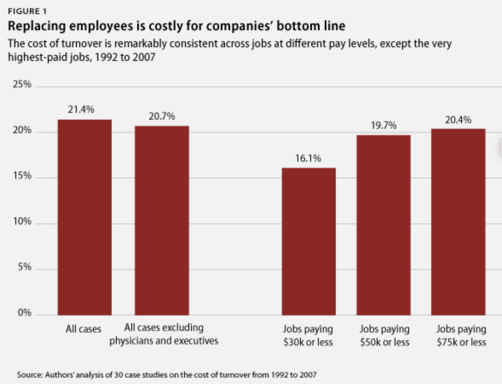
Source: American Progress
This cost does not simply represent wages and materials but also includes recruitment costs, loss of productivity, impacts ARR, and new-hire training costs.
The more subtle costs are decreased motivation, lowered morale, negative culture, and resentment.
Put simply, if you have worked hard to hire good talent, the last thing you would want is to continue to spend more on replacing a departing employee.
Fortunately, most of your voluntary turnover is preventable. Analyzing growth rates coupled with other metrics can highlight why people are quitting and what practices need to be implemented to reduce churn.
2. Low engagement
The difference between engaged and disengaged employees can equate to success or failure. A report by Gallup suggests that disengaged employees are estimated to cost the world as much as $7.8 trillion annually in lost productivity.
Furthermore, disengagement can cause more harm than freezing your revenue growth. The soft costs of disengaged employees include low morale, resentment, bad reputation, negative culture, and the infamous 'quiet quitting'.
Being a major workplace trend throughout 2022, “Quiet quitters” make up at least 50% of the U.S. workforce.
These employees don’t tend to leave but do the bare minimum expected. Simply working just enough not to get fired.
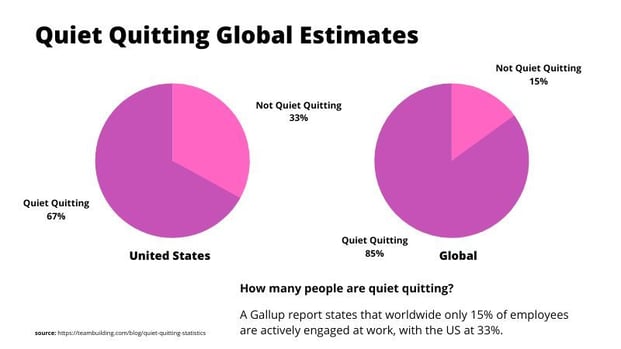
Source: Team Building
The State of the Global Workplace 2022 report finds that only 21% of employees are engaged at work.
Here are some factors that contribute to low engagement at work:
-
No recognition
-
Lack of career development
-
Poor management
-
Stressful workplace
-
Lack of Purpose
-
Inadequate pay
It is important for employers to recognize and acknowledge these factors. Be willing to adapt so that employees feel valued and remain engaged. That said, company growth can act as a signal for HR managers to understand overall employee engagement and progress.
3. Bad company culture
An SHRM report on workplace culture found that about 20% of Americans have left a job in the past five years due to bad company culture, costing companies a whopping $223 billion.
When a company culture turns toxic, employees are left feeling depleted and lost. While many elements affect organizational culture, the prominent factors include poor managerial practices, inadequate transparency, micromanagement, lack of physiological safety, and communication gaps.
Consequently, the impact of a hostile work culture includes
-
Low employee engagement
-
Higher rates of absenteeism and presenteeism
-
Gossiping
-
Lack of empathy
-
High employee turnover
-
Low morale
Yet, bad workplace culture isn’t something that can not be contained. Leaders can create better work environments when they understand what drives their employees and engage meaningfully with them.
This is precisely where AI can help.
AI-powered platforms like EngageRocket empowers managers with smart conversation ideas and action suggestions to foster meaningful interactions with their team members. When you listen to your employees, keep them engaged, and nurture them, it keeps them fulfilled and ultimately improves the work environment.
Optimize your employee growth with EngageRocket
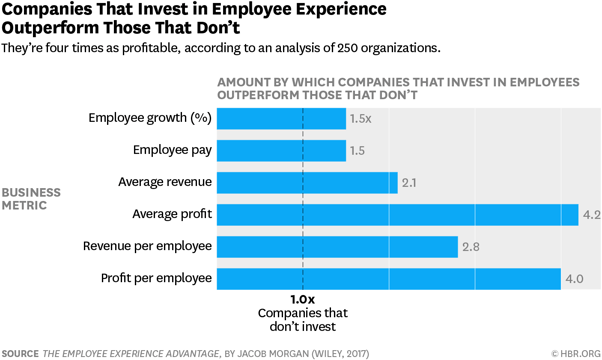
Source: HBR
Organizations with the highest levels of employee engagement outperform their rivals. They experience growth in earnings per share by more than four times. In the long run, maximizing EX helps organizations achieve better business success, engagement, and employee happiness.
And this can only be achieved when you follow a data-driven approach to people management. Greater visibility and accuracy can be attained by using an HR platform that supports end-to-end data capture.
The BELONG Solution from EngageRocket aims to plug in gaps between managers and employees through non-intrusive 360-degree surveys, continuous listening, and pulse surveys from onboarding until separation.
The platform can rapidly analyze feedback and convert it into valuable insights, enabling managers to address skills and learning gaps that affect employee performance.
Want more content like this?
Join EngageRocket's HR Impact community and get the latest HR resources and exclusive event invites!
Frequently Asked Questions (FAQs)
1. How to measure employee growth?
The employee growth rate calculator gives a correct measure of growth in a company. It’s the difference between the current period employee number and the previous period employee number divided by the previous period employee number, multiplied by 100%.
The employee growth rate formula gives you a percentage number that can help you understand growth patterns in your organization and optimize the strategies accordingly. Additionally, the same formula can be used for different departments under the same organization.
2. How can companies cultivate employee growth?
When organizations apply a lens of a “people-first” mindset, they can efficiently maximize employee growth. Here are 3 different ways to double down on employee growth and foster an employee-first culture.
Listen to your employees
Organizations need to apply continuous listening strategies to understand their employees’ real needs, expectations, pains, and motivators.
Feedback and coaching
Leverage organization-wide surveys, lifecycle surveys, pulse surveys, multi-rater feedback, and open-ended comments. Use these to give your employees a clear direction on how they’re doing and how they can improve their performance.
Better retention strategies
Curating an employee retention program is an excellent way to foster company growth. Retention strategies put employee well-being at the forefront and promote a better employee experience. Organizations must prioritize leadership development, career mobility, enhanced compensations, and excellent manager support for employees.

.jpeg)
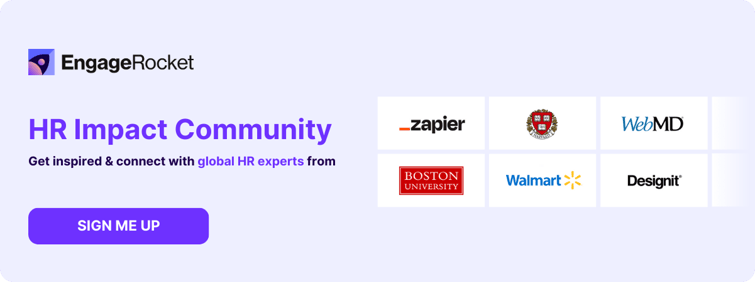

 .
. 